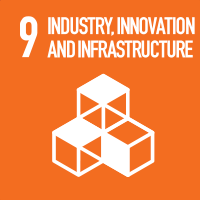Studying at the University of Verona
Here you can find information on the organisational aspects of the Programme, lecture timetables, learning activities and useful contact details for your time at the University, from enrolment to graduation.
Study Plan
This information is intended exclusively for students already enrolled in this course.If you are a new student interested in enrolling, you can find information about the course of study on the course page:
Laurea magistrale in Computer Engineering for intelligent Systems - Enrollment from 2025/2026The Study Plan includes all modules, teaching and learning activities that each student will need to undertake during their time at the University.
Please select your Study Plan based on your enrollment year.
1° Year
| Modules | Credits | TAF | SSD |
|---|
2° Year It will be activated in the A.Y. 2025/2026
| Modules | Credits | TAF | SSD |
|---|
3 modules among the following| Modules | Credits | TAF | SSD |
|---|
| Modules | Credits | TAF | SSD |
|---|
3 modules among the following| Modules | Credits | TAF | SSD |
|---|
4 modules among the following:
- 1st year: Advanced visual computing and 3d modeling, Computer vision, Embedded & IoT systems design, Embedded operating systems, Robotics
- 2nd year: Advanced control systemsLegend | Type of training activity (TTA)
TAF (Type of Educational Activity) All courses and activities are classified into different types of educational activities, indicated by a letter.
Systems verification & testing (2024/2025)
Teaching code
4S009017
Academic staff
Coordinator
Credits
6
Also offered in courses:
- Systems verification & testing of the course Master's degree in Computer Engineering for Robotics and Smart Industry
Language
English
Scientific Disciplinary Sector (SSD)
ING-INF/05 - INFORMATION PROCESSING SYSTEMS
Period
Semester 1 dal Oct 1, 2024 al Jan 31, 2025.
Courses Single
Authorized
Learning objectives
The course aims to train students in the field of languages and automatic tools that underpin the verification and testing methodologies of complex digital and analog systems. In particular, the main objective of the course is to explain how it is possible to represent complex systems through virtual platforms in relation to their physical realization and to guarantee the functional safety and certification process of the devices that compose them. Upon completion of the course, the students must demonstrate that they have acquired the fundamental knowledge to understand the methodologies and tools necessary to verify and test complex analog / digital devices, to guarantee their functional safety, and to certify them. This knowledge will allow the students to: represent analog / digital systems in the form of virtual platforms; define verification methods based on dynamic and semi-formal techniques; develop approaches for testing and fault tolerance; use, integrate, and develop automatic tools for the modelling, verification and testing of analog / digital systems; activate certification processes.
Prerequisites and basic notions
To best learn the topics covered in the course it is necessary to have knowledge in the field of HW/SW system design
Program
A. Systems modeling and veriifcation
- SystemVerilog
- ABV introduction
- ABV - specification languages
- ABV - assertion automatic generation
- ABV - assertion qualification: coverage
- ABV - assertion qualification: vacuity
- ABV - assertion qualification: overspecification
B. Systems testing and certiifcation
- Faults-defects-errors definition
- Digital faults modeling
- Analog faults modeling
- verilog-AMS
- Systemc-AMS
- Gate-level simulation
- Fault simulation
- Combinational ATPG
- Sequantial ATPG
- Design for testability
- Self-testing circuits
- Fault tollerance
- Functional safety
- Certification for safety
Bibliography
Didactic methods
The course is organized in lectures, exercises and self-assessment activities through the use of online questionnaires. There will also be practical computer exercises.
Learning assessment procedures
The final exam consists of two parts:
- a written test containing questions and exercises;
- a report describing the application to a case study of skills acquired in the laboratory exercises. Alternatively, to such a report, it is possible to carry out a project connected with the thesis.
Evaluation criteria
To pass the exam, students must demonstrate that they:
- understand the principles related to the verification and testing of a system;
- are able to present their arguments in a precise and organic way without digressions;
- know how to apply the knowledge acquired to solve application problems presented in the form of exercises, questions and projects.
Criteria for the composition of the final grade
The final grade is given by the weighted sum of the theory grade and the laboratory report.
Exam language
English

